
The practice of rainwater harvesting is a noteworthy green infrastructure activity with many potential environmental, cultural, and ecological benefits, and is often used to help conserve water. When collected, rainwater can supply water for many applications both inside and outside a property, depending on local laws and regulations.
Contrary to popular understanding, a water pump is many times ideal or needed to use the water collected in a rain tank during rainwater harvesting. The list of rainwater uses that will need a water pump are much longer than the list of uses that will not.
Rainwater Uses | Pump Recommended
Harvested rainwater can be used to water lawns, landscapes, food gardens, in pressure washing, to wash vehicles, provide an emergency water supply, and to refill pools and other outdoor water features. In larger use cases, rainwater harvesting can be used to supply water inside a structure for non-potable uses such as flushing toilets and potable uses such as sinks and showers, in fire suppression systems, and to supply water for animals and agriculture needs such as field irrigation and watering livestock.
A water pump will be needed for most of the above-listed applications to effectively and efficiently use the collected rainwater.
Many homeowners, farms, and businesses new to rainwater harvesting have the question of where to install a water pump in a rainwater harvesting system as well as what water pumps are available, what pumps are best, and common specs. Our guide will answer these questions.
Where to Install a Water Pump in a Rainwater Harvesting System
In general, there are two main installation locations for a water pump in a rainwater harvesting system. We will call these: in-container and out-container. There are several water pump types and options made for these two separate installation locations.
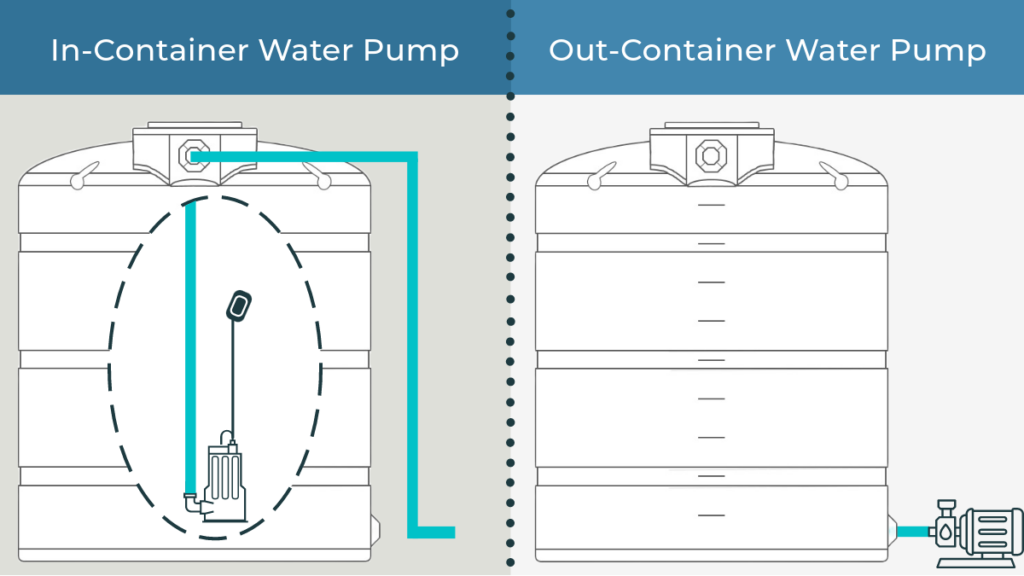
In-Container Water Pumps:
As the name suggests, in-container water pumps are engineered to be installed and work from the inside of a rainwater collection container.
In-container pumps include the submersible water pump type. Submersible water pumps are engineered to operate, move, and provide water pressure all while being fully or partially submerged in the volume of water inside a rain barrel, tank, or underground cistern.
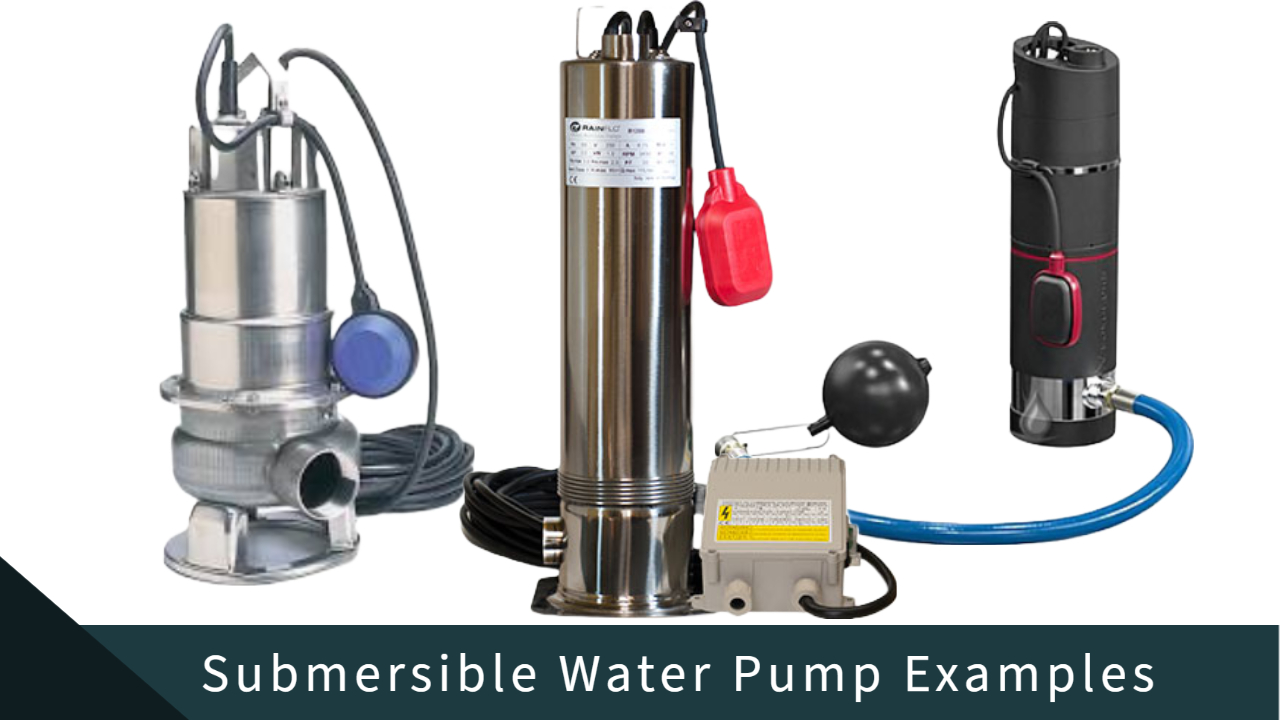
Notes
Submersible water pump products that feature a floating intake valve called an extractor are the best in-container pump option for rainwater harvesting systems. The extractor features a float that suspends the water intake screen just beneath the water’s surface, which is the cleanest water within the container. This makes submersible water pumps capable of supplying the best quality rainwater both consistently and conveniently.
Out-Container Water Pumps:
Out-container water pumps are engineered to be installed outside the rainwater container within the plumbing and water distribution system. This is known as in-line installation.
Most water pump products are out-container style pumps. Simply put, this category includes all other water pump models other than the submersible.
Examples
Examples of out-container water pumps include diaphragm pumps, centrifugal pumps, booster pumps, jet pumps, above ground pumps, and transfer pumps. There are other water pump types, but the ones listed are most commonly used in rainwater harvesting systems and applications.
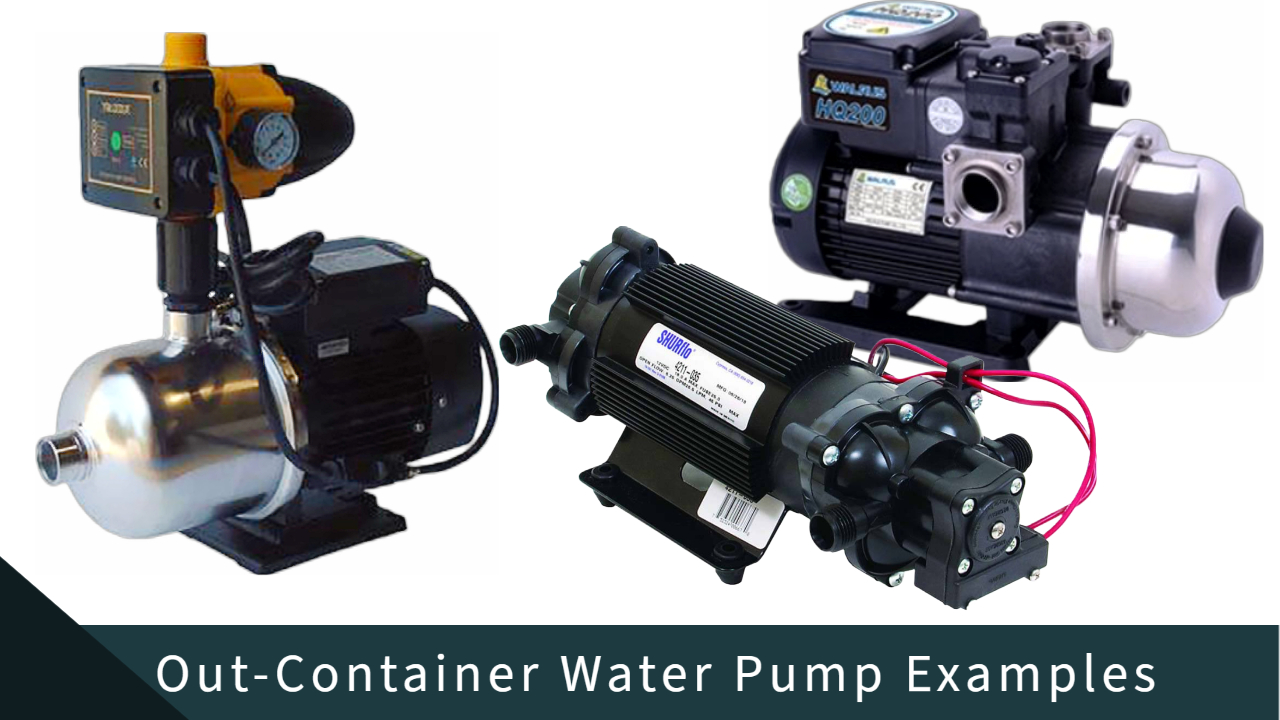
Electric powered diaphragm pumps and booster pumps such as the Grundfos SCALA 1 are perhaps the most common out-container water pump types selected and used in rainwater harvesting scenarios.
Notes
Out-container water pumps are often meant for permanent or semi-permanent installation, and are recommended to be firmly mounted to whatever surface they are being installed on.
These pump types are also often recommended to be installed indoors or within an external pump cover to safeguard against weather and accidental impacts that can affect the plumbing setup.
Water Pump Design Basics
For water pump design and engineering, they all are designed the same when it comes to plumbing connections regardless of the rainwater pump type. All water pumps feature an inlet and an outlet port and similar sizing standard.
Inlets and Outlets
The inlet port serves to take water into the pump from the water supply, in this case the rainwater tank. The outlet port serves to push water out of the pump to where we want the water to go, such as to an irrigation system, spray nozzle, or water fixture. Pump ports will be clearly labeled on the pump body and/or in the manual documentation that came with the pump.
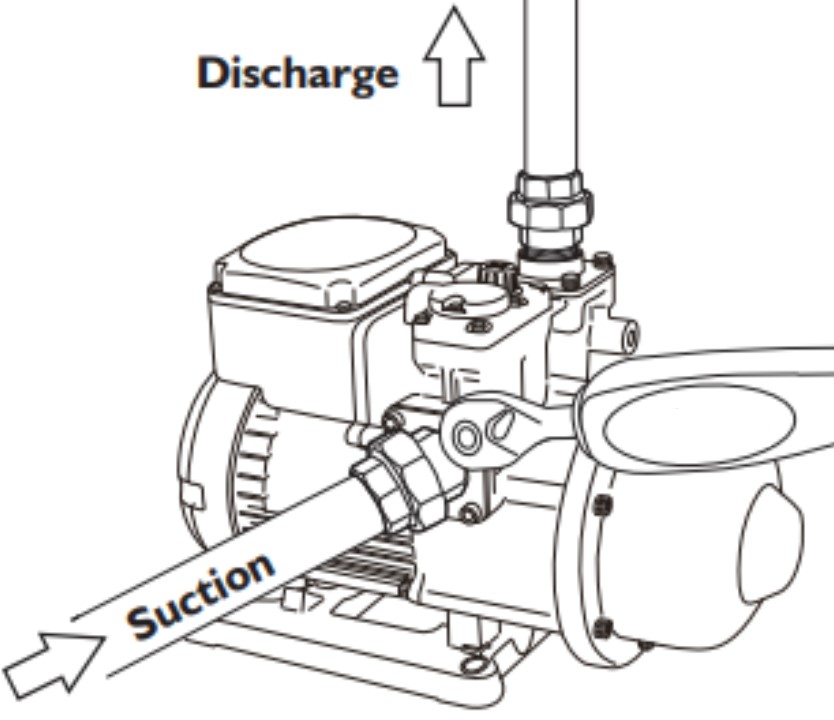
Sizes
Manufacturers design water pump inlets and outlets to have a specific size to fit a specific diameter of pipe. They also use a set sizing system and thread style type. For example, water pump ports that are sized 1 inch NPT in diameter with female threads are made for use with 1 inch pipe or tubing with male style NPT threads.
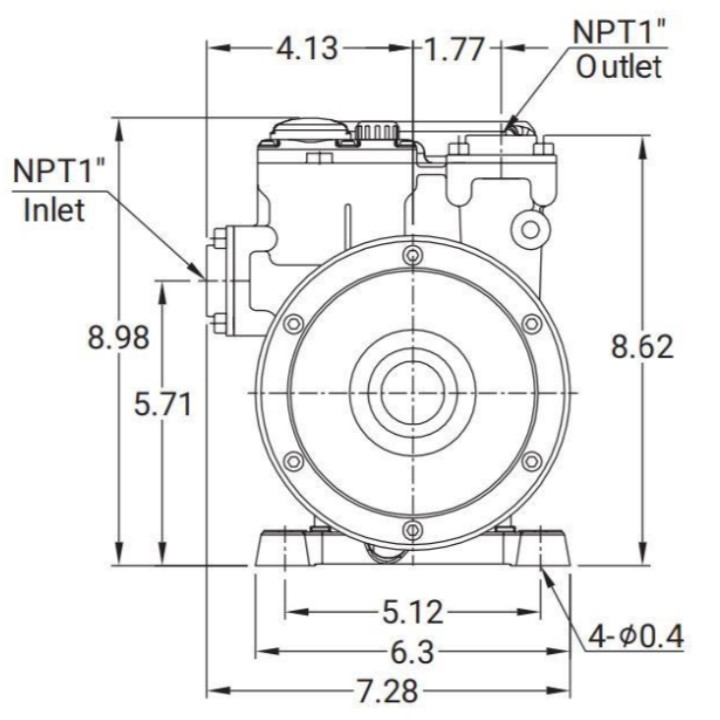
Standards
The abbreviation NPT stands for National Pipe Thread Tapered and is a standard used to match plumbing seamlessly and reliably. Water pumps and pipes can also be NPS style. NPS stands for Nominal Pipe Size and is similar to NPT but without the tapered end.
The takeaway: When sizing plumbing and water pumps for the perfect fit, choose and use pipes or hoses that have the same size and design standard as your water pump.
If your water pump will connect to the outlet drain on your rain cistern, either choose a pump that matches your tank’s bulkhead fitting size or change the fitting to match.
Including and Using a Water Pump is Easy: We Tell You How
Many modern water pumps are actually made for easy installation and use. There are many types that can be considered as “plug-and-play,” demonstrating they are intended to be easy to put into a plumbing system and to use. Depending on the pump type and what the water will be used for, plumbing can be a garden hose or pipes such as PVC, PEX, or steel.
Proper water pump setup will follow this order:
- First: the water source.
- This is the rainwater collected and stored in the container by the rainwater harvesting system.
- Second: plumbing to the water pump.
- Unless a submersible pump is used, plumbing must be used to connect the container to the water pump.
- Third: the water pump.
- The pump must be positioned between the water source and the end point-of-use; i.e. where we want to use the water.
- Fourth: plumbing from the water pump.
- Plumbing must be used to cover the distance between the water pump and where the water will be used, connecting the two together. This could also be a plain garden hose or sprayer hose.
- Fifth: the end point-of-use and using the water.
- The equipment or fixture(s) that will use the water must be connected to the plumbing from the water pump; e.g., sprinklers, irrigation system, soaker hoses, spray nozzles, toilets, sinks, water troughs, fire suppression system, etc.
Installing Submersible, In-Container Water Pumps

In-container submersible water pumps will feature an outlet port made to accept a specific size of pipe or hose. The outlet port on a submersible water pump may be on the top or side of the pump.
Submersible pumps with an outlet on top are intended to run plumbing up and out through the rainwater container. This can require a specially designed lid, a tank screen cover, or drilling a hole in the cistern that may need a self-aligning fitting to keep the seal on the container and make sure insects cannot get in. Some rainwater tanks also feature an extra bulkhead found near the top that can be used to connect plumbing from an outlet-on-top type submersible water pump.
Side-outlet submersible pumps are the preferred choice for rainwater harvesting setups as these pump types can be connected directly to the bottom drain outlet fitting port that comes on all rain tanks.
Installing Out-Container Water Pumps
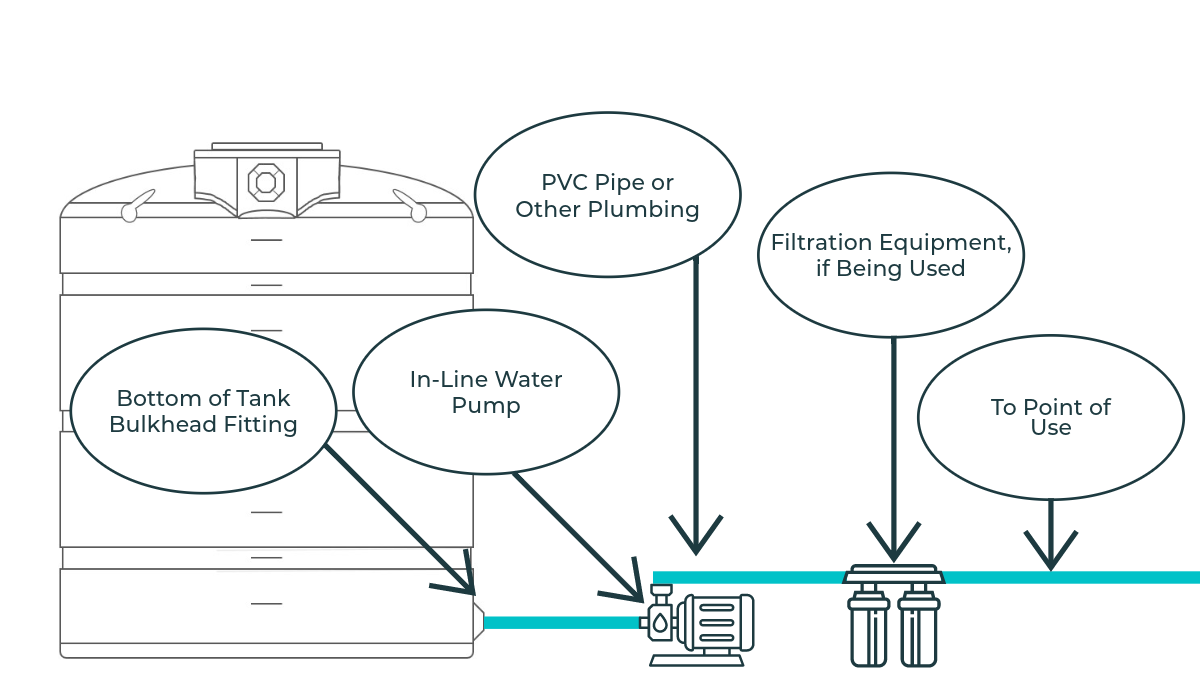
Out-container water pumps should be placed in-line with plumbing running from the rainwater container to the pump and then to the point-of-use location or locations. A simple, true union ball valve should be installed at the rain tank so water flow can be controlled for maintenance or modifications. Most water pumps feature a threaded inlet and outlet port and should be used with threaded, tapered end plumbing as this will allow for quick and easy connections.
Out-container water pumps should be securely mounted and installed on concrete, a wooden platform, or to a steel frame. Mounting will prevent movement from vibrations while the pump is in use that can cause fittings or pipes to become loose or even damaged over time. Many water pumps feature a base plate with screw hole locations for installation.
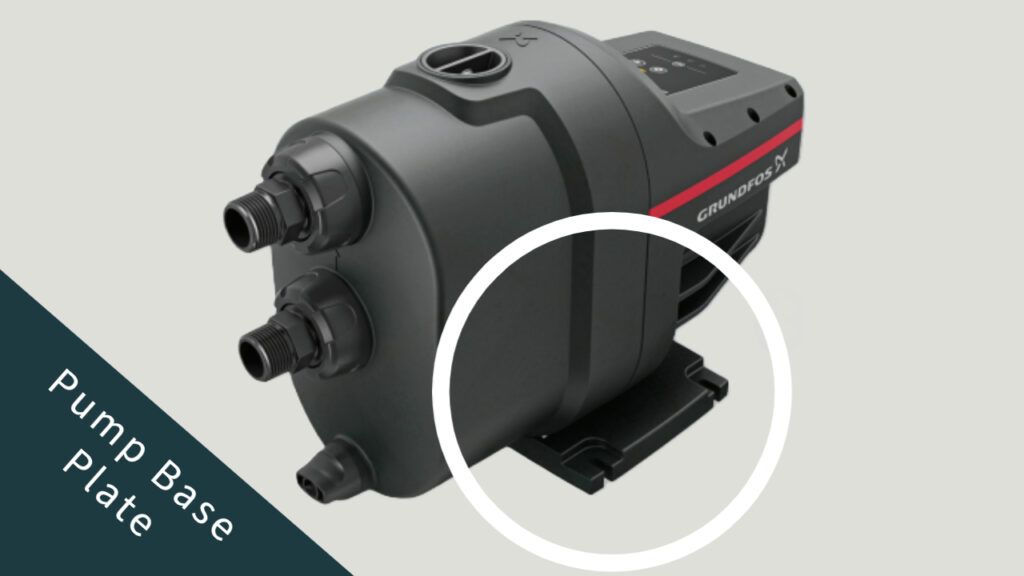
Considerations for Electrical Power, Wiring, and General Placement
Electric water pumps are the preferred choice for rainwater harvesting systems. They are easier to install, use and maintain, are quieter and still capable of providing effective results compared to their gas-powered counterparts.
The electrical wiring requirements and potential setup are also an important consideration when planning for and installing an electric rainwater pump. Many water pumps feature traditional electrical cords that plug into typical wall outlets, while other pump types must be hard wired into an electrical circuit or junction box.
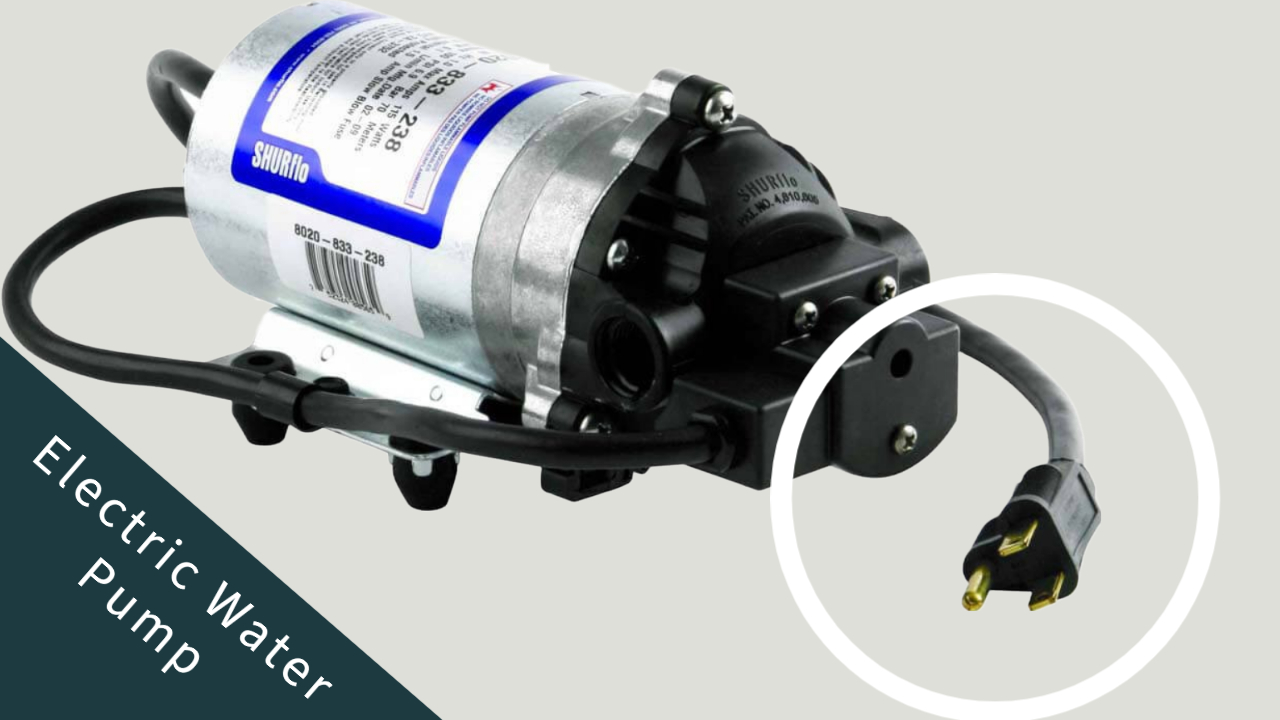
When shopping, consider how long the electric cord or cables are that come with your water pump options. Consider where your rainwater system is located on your property, where your electric system or outlets are, and where you plan to use the rainwater.
When you consider these details, consider where the best location will be for the water pump to limit the need to extend or modify wiring, include extension cords, or to use plumbing that is longer than needed. Shorter plumbing will improve water pump pressure and flow rate outputs and will also reduce costs.
Takeaway | Where to Install a Rainwater Harvesting Pump
In many rainwater use cases, a water pump will be needed to provide the flow rate and water pressure required by water-using fixtures and equipment. Using harvested rainwater for a garden sprinkler, irrigation system, or even a hose with a spray nozzle will need a water pump.
Water pumps are available in various models and engineering. Some are designed to be submerged inside a rain tank while others are made for in-line installation in the plumbing outside the tank on its way to the point-of-use. Most rainwater harvesting pumps are easy to install and easy to use. Electric water pumps are the top recommended choice. Some electric-powered models plug up into wall outlets while others must be hardwired.
When shopping for a water pump and planning a rainwater harvesting system, choose a water pump that will provide the right flow rate (GPM), the right pressure (PSI), and with inlet and outlet ports sized to match the size of the fitting on the rainwater cistern and the plumbing for using the water.
You can find our available water pumps for sale here. We also recommend the company Sprayer Supplies and their wide selection of water pumps that can be used in rainwater harvesting; see their selection here. If you have any questions or need assistance, contact us, our support experts are always ready to help.